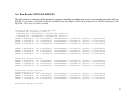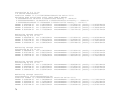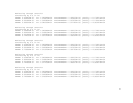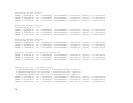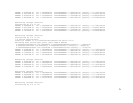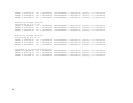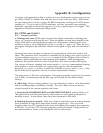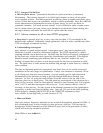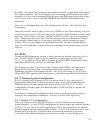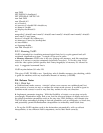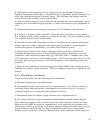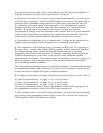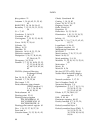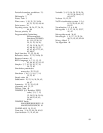Big PMLs cost a great deal of memory and computation time, at least triple that required
by ordinary materials. This is not improved by overwriting the PML blocks with other
materials, so if you were considering filling all space with PML and writing other things
over it, don’t. Have a look at the HOLLOWBOX and TILEDPLANE statements for
alternatives.
Don’t use a wavelength that is an exact multiple of the cell size. This will often slow
convergence.
Once FIDO/TEMPEST starts to page, it’s all over. FDTDs use all of their memory, over and
over and over and over, so all of the data in the page file will be reloaded on every single
time step. This will give your disc a healthy workout but will not get your simulation
done. The postprocessor uses quite a bit more memory that FIDO/TEMPEST, but doesn’t
loop through it many times, so it can page a good deal without running into speed
trouble. On a very big simulation, the postprocessor may run out of virtual address
space on a 32-bit machine. Improved memory utilization in the postprocessor is on the
wish list.
B.2. REXX
Getting the REXX interpreter running is easier, because the installer does most of it for
you. On OS/2, REXX is built in, so you should be in good shape from the start.
poems.cmd is written in Classic REXX, so either of the OS/2 REXX interpreters (classic
and Object REXX) will work fine, as will Regina REXX.
For Windows or Linux, you’ll need a copy of Open Object REXX or the open-source
Regina REXX interpreter (http://sourceforge.net/projects/regina-rexx). Both have
installation programs, which makes life easy. NB: As of this writing (2/16/07) Open
Object REXX does support 64-bit architectures, so the 32-bit equivalent should be used.
B.3. X Window System Configuration
In OS/2, getting Vis5D working is a bit of a parlour trick. If your video driver is
supported by XFree86-OS/2, then that’s all you need. If not, then a combination of
XFree86 and the (old and unsupported) PM/X service from TCP/IP 2.1. In this
configuration, XFree86 supplies the libraries used by Vis5D, and PM/X supplies the
actual X server.
In Windows, installing Hummingbird Exceed will do everything required, except for
setting up the configuration parameters. In Linux, it should work right away.
B.3.1. Sample X11 Configuration
This is an excerpt from the CONFIG.SYS file on an OS/2 machine in my laboratory
(called orthodox). In your TCP/IP configuration, be sure to enable the loopback interface
(127.0.0.1). If you want X to work properly when you’re not connected to the network,
use the loopback interface name (usually localhost). Your TCP/IP hostname can be used
instead, but if you do this, X will fail when your network connection goes down.
Your paths will probably be different, but that isn’t usually too hard to figure out.
83




